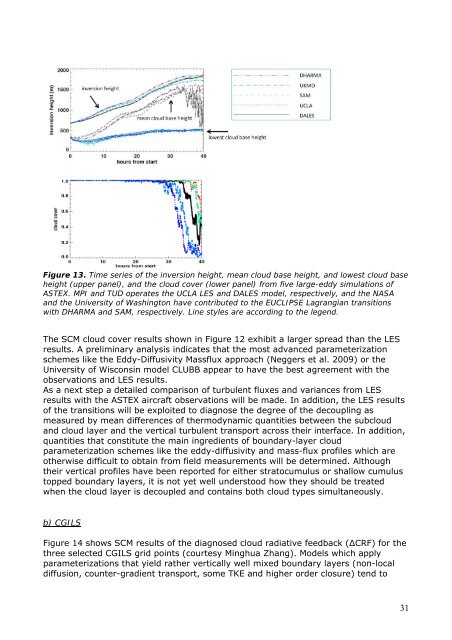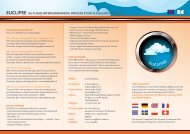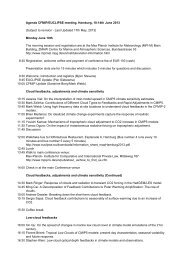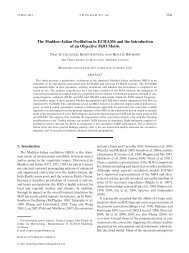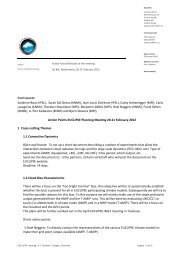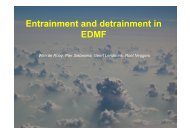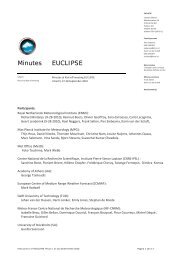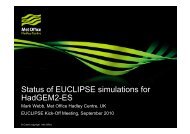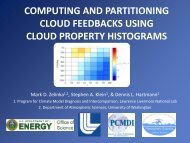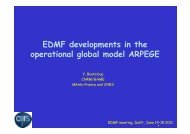EUCLIPSE First Period Report
EUCLIPSE First Period Report
EUCLIPSE First Period Report
Create successful ePaper yourself
Turn your PDF publications into a flip-book with our unique Google optimized e-Paper software.
Figure 13. Time series of the inversion height, mean cloud base height, and lowest cloud base<br />
height (upper panel), and the cloud cover (lower panel) from five large-eddy simulations of<br />
ASTEX. MPI and TUD operates the UCLA LES and DALES model, respectively, and the NASA<br />
and the University of Washington have contributed to the <strong>EUCLIPSE</strong> Lagrangian transitions<br />
with DHARMA and SAM, respectively. Line styles are according to the legend.<br />
The SCM cloud cover results shown in Figure 12 exhibit a larger spread than the LES<br />
results. A preliminary analysis indicates that the most advanced parameterization<br />
schemes like the Eddy-Diffusivity Massflux approach (Neggers et al. 2009) or the<br />
University of Wisconsin model CLUBB appear to have the best agreement with the<br />
observations and LES results.<br />
As a next step a detailed comparison of turbulent fluxes and variances from LES<br />
results with the ASTEX aircraft observations will be made. In addition, the LES results<br />
of the transitions will be exploited to diagnose the degree of the decoupling as<br />
measured by mean differences of thermodynamic quantities between the subcloud<br />
and cloud layer and the vertical turbulent transport across their interface. In addition,<br />
quantities that constitute the main ingredients of boundary-layer cloud<br />
parameterization schemes like the eddy-diffusivity and mass-flux profiles which are<br />
otherwise difficult to obtain from field measurements will be determined. Although<br />
their vertical profiles have been reported for either stratocumulus or shallow cumulus<br />
topped boundary layers, it is not yet well understood how they should be treated<br />
when the cloud layer is decoupled and contains both cloud types simultaneously.<br />
b) CGILS<br />
Figure 14 shows SCM results of the diagnosed cloud radiative feedback (ΔCRF) for the<br />
three selected CGILS grid points (courtesy Minghua Zhang). Models which apply<br />
parameterizations that yield rather vertically well mixed boundary layers (non-local<br />
diffusion, counter-gradient transport, some TKE and higher order closure) tend to<br />
31


